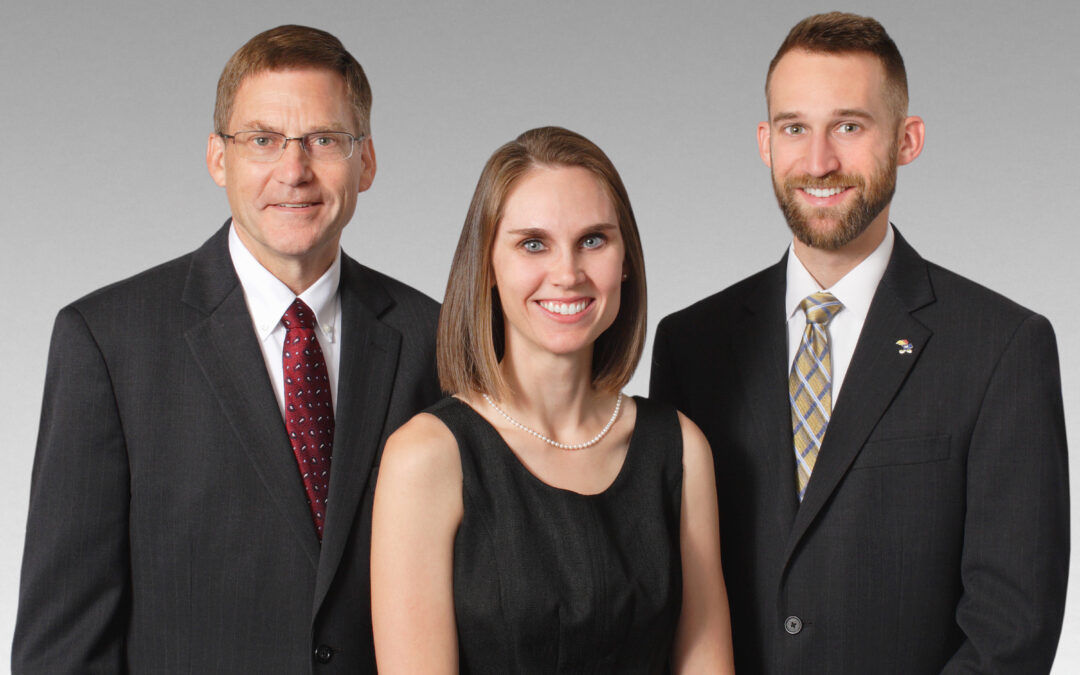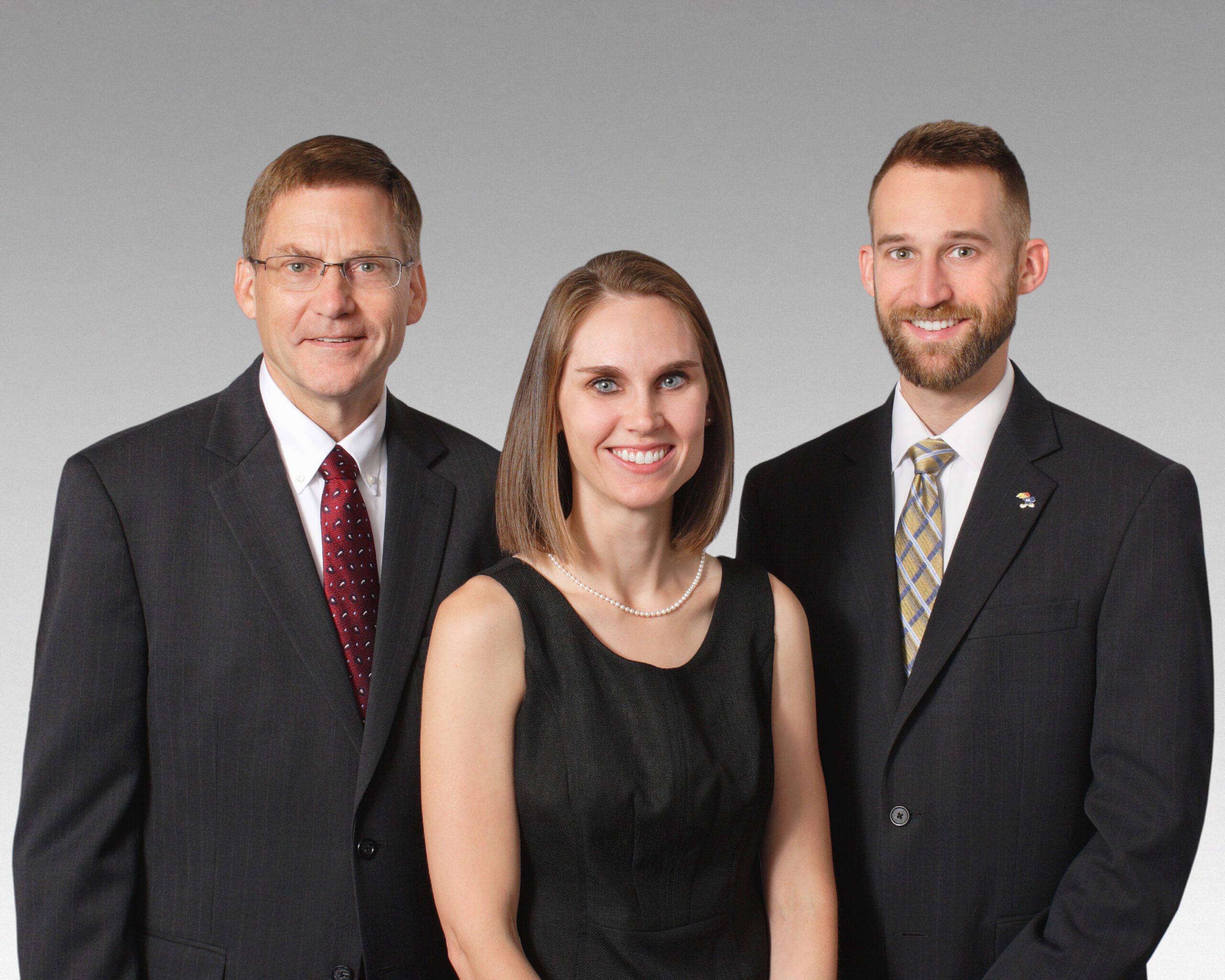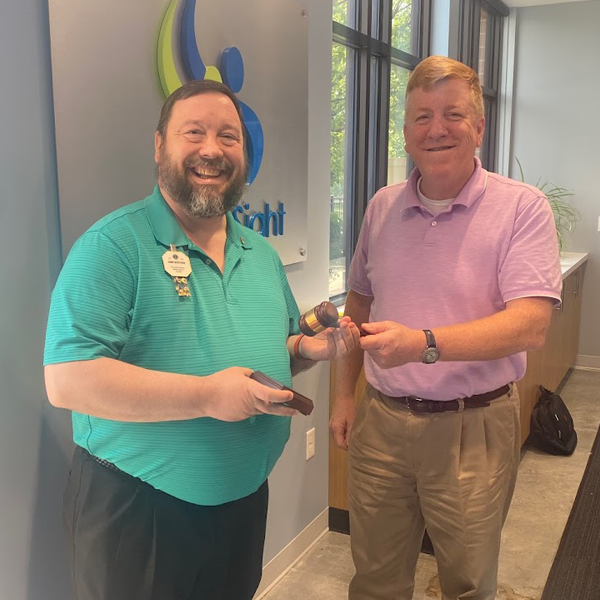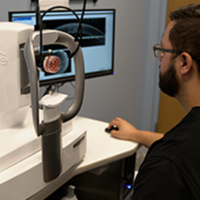M
Leave a Legacy of Giving
You can support our mission of changing lives by saving sight in multiple ways!

Downing and Lahey Funeral Home, located in Wichita, Kansas, has been chosen as Saving Sight’s first Champion of Sight. The Champion of Sight Award recognizes our partners who exhibit extraordinary dedication in advocating and assisting in making eye donation possible. Together, with our Champions, we truly change lives by saving sight! Champions of Sight are nominated by and voted for by our team here at Saving Sight.

Our partners at Downing and Lahey Funeral Home work to help support the donation wishes of decedents and their families.
“We chose Downing and Lahey for their open communication. When I called to introduce myself, they let me know some areas of opportunity and how we could make them better. I followed up as promised by emailing their funeral home directors our commitment,” says Hospital Development Manager Kelly Falwell. We are lucky to have such great partners at Saving Sight that play a part in facilitating the eye donation process and advocating for donation, donor families and recipients in our service area. Downing and Lahey has been a great partner to Saving Sight by allowing our recovery technicians to perform recoveries in the funeral home from time to time.
Michael Morris, Funeral Director with Downing and Lahey says, “We understand the importance of donation and giving somebody the opportunity to see from somebody that’s passed away. That’s a great thing to be able to share with someone.” By working in tandem with funeral homes, we are able to honor the donor and their families’ wishes in being a donor.
In June 2021, Saving Sight and the Kansas Eye Bank joined together in a partnership to serve the entire state of Kansas. Our new Wichita facility has rich history of serving its community by facilitating the gift of sight. We’re happy to share the following images from the donor quilts that were made over the years, celebrating the legacy that Wichita-area eye donors left in their selfless gifts.









Saving Sight’s Donor Services Center (DSC) plays a vital role in facilitating the gift of eye donation for thousands of individuals each year. Our DSC serves as the communications hub of Saving Sight’s eye banking operations. The department, staffed 24 hours a day, seven days a week, keeps the donation process moving forward and helps fulfill the wishes of potential eye donors.
A DSC coordinator’s work begins when they receive a referral for a potential
Once the DSC has determined that Saving Sight can move forward with recovering the donor’s gift of eye donation, they dispatch a recovery technician on site. They will also make courtesy calls back to the donor hospital and the funeral home to keep them up-to-date on the recovery technician’s arrival and departure.
At the same time, the DSC team will work to gain access to the patient’s medical chart. They will review records for any potential rule-outs for donation to ensure safety for the transplant recipient. Finally, specially trained DSC team members will conduct a final review of medical records, serology results, and any other important information to the case to determine final eligibility and release for transplant.
The DSC’s work happens quickly, and eye donation recovery must happen within 24 hours from the time of death. Therefore, the DSC team members must exhibit excellent multi-tasking skills while also compassionately communicating with various stakeholders, including grieving families. We’re proud to have a group of caring and highly skilled individuals who work in our Donor Services Center!


[pictured L-R: Pat Martchink passing the gavel to Larry Boettcher; Cassidy Obermark being honored for her board service; the board meeting at the Kansas City C office at the June meeting.]
Kansas City, Mo. (July 1, 2021) – Saving Sight is pleased to welcome four new people to its Board of Directors for the 2021-2022 fiscal year (July 1 – June 30). Welcome Council Chair Lion Bob Noellsch, Vice-Council Chair Lion Devin Struttmann, Lion Mike Sliger, and Wichita community board member Marc Vincent. PDG Lion Scott Sattler remains on the board and switched seats to represent Lions District M-1, Lion Larry Boettcher was re-elected to a second term, as well as community members Jeff Schaeperkoetter and Amy Leslie.
Board members are key to the organization’s success. They actively participate in long-range planning and monitor the organization’s financial health and overall performance. As highly visible members of their communities, the board members also enhance Saving Sight’s public standing by sharing the mission, accomplishments, and goals with Lions clubs, the general public, and other partner organizations. As Lion board members, these individuals also keep their districts informed about Saving Sight.
“We are able to change more lives by saving sight due to our board members engagement, leadership, support and oversight,” said Tony Bavuso, chief executive officer.
In addition to welcoming new members to the board, Saving Sight also expressed gratitude to three individuals who retired from the board of directors on June 1, 2021. We were honored to have PCC George Winkeler, Jr., PDG Roger Tiemann, and Lion Dr. Cassidy Obermark serve on our board and thank them for their valuable service.
At the June Board of Directors meeting, the board elected its 2021-2022 leadership team.
These board members were elected to leadership roles for the new fiscal year:
President: PCC Larry Boettcher, MD-26 M4
Vice President: Lion Pat Martchink, MD-26 M2
Treasurer: Lion Mike Oldelehr, MD-26 M7
Secretary: PDG Scott Sattler, MD-26 M1
At the June board meeting, past president Lion Pat Martchink ceremoniously passed the gavel to newly elected president PCC Larry Boettcher. Pat will serve as vice president for the 2021-2022 fiscal year to ensure a smooth leadership transition.


The U.S. Consumer Product Safety Commission reports that there are 9,000 fireworks-related injuries each year in the U.S. Thirty percent of those are eye injuries, and one-fourth of those eye injuries result in blindness. What’s more, children account for the majority of fireworks-injury victims, and for children under 5, sparklers — which burn at 2,000 degrees Fahrenheit and can cause third-degree burns — account for one-third of fireworks-related injuries.
For these reasons, the American Academy of Ophthalmology encourages you to follow these recommendations:
If you do decide to shoot off fireworks yourself, be sure to follow all safety precautions, protect your eyes, and keep children a safe distance away. The staff at Saving Sight wishes you a safe and fun-filled Independence Day weekend


“The OCT is a big microscope that measures the thickness of the cornea, and we use it to measure our corneas before we start processing for our DSAEK or ALK processing. We also take images after processing so the surgeon can see what the processed tissue actually looks like. It gives us more insight on the quality of the tissue and if it will be suitable for the surgery type we are offering it for. We can be proactive in what we offer to the surgeons,” says Debora Van Klinken-Muntz, Lead Laboratory Technician.
“Using it as an eye bank saves us a lot of time. It also lets us be good stewards of the tissue we receive. I don’t know how we could do eye banking without an OCT machine.”